Best of 2021: Top 10 Incredible Art Installations Celebrate a Return to Public Life
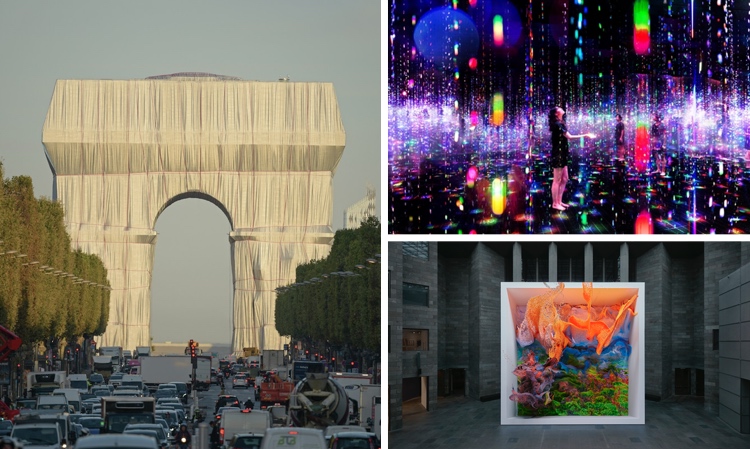
Coming off of a year unlike any other in recent history, artists were ready to get back to work as the world started opening up again. While social justice issues and the pandemic still sparked moving works of art, plenty of artists also moved beyond those themes to explore new territory. The result is 10 art installations that are not only the best of 2021, but also varied in their approach.
Whether we are looking at Refik Anadol’s use of AI or Daniel Popper’s nature-inspired sculpture, each installation has something important to say. 2021 was also the culmination of Christo and Jeanne-Claude’s long-awaited plans to wrap Paris’ Arc de Triomphe in fabric. Initially scheduled for 2020, but delayed by the pandemic, this thrilling installation also turned into a posthumous tribute to Christo.
Loss and hope were other strong themes in this year’s group of installations. Some artists, like Motoi Yamamoto, produced work influenced by their own personal loss. Other installations, like the life-size elephant sculpture traveling the globe for the CoExistence project, focused on global loss.
No matter what the message, what these art installations have in common is their ability to create impact. Each, in its own unique way, sends a message to viewers and stirs emotion in an undeniable way. Let’s take a closer look at these 10 art installations to see what makes them the best of 2021.
2021 saw artists returning to museums and public spaces with incredible installations.
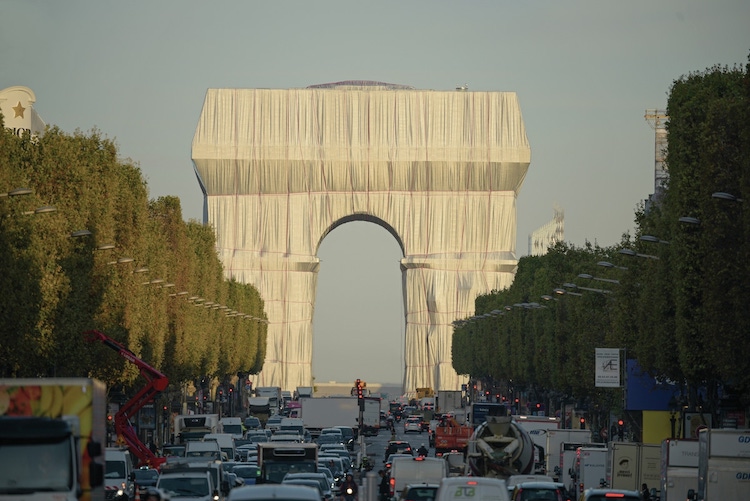
Arc de Triomphe Wrapped by Christo and Jeanne-Claude
It was a dream of the artistic duo to wrap Paris’ iconic Arc de Triomphe in their signature fabric. Though due to delays, their vision was only realized after they had both passed, surely they are smiling down upon this installation.
Swathed in fabric held together by red ropes, the installation is the culmination of more than five years of work. For a little over two weeks, the public could enjoy the shimmering building and get close enough to touch the artwork, just as Christo and Jeanne-Claude would have wanted.
View this post on Instagram
In America. How Could This Happen… by Suzanne Brennan Firstenberg
Certainly one of the year’s most moving installations took place on the National Mall. In America. How Could This Happen… was created by Suzanne Brennan Firstenberg to commemorate what has been lost in the COVID-19 pandemic. All told, over 670,000 white flags dotted the area, each representing an American life lost.
This installation quickly became more than a piece of art. It was a place for people to mourn what has been lost and to pay their respects. In doing so, Firstenberg gave people an important outlet for their emotions after this pivotal time in history.
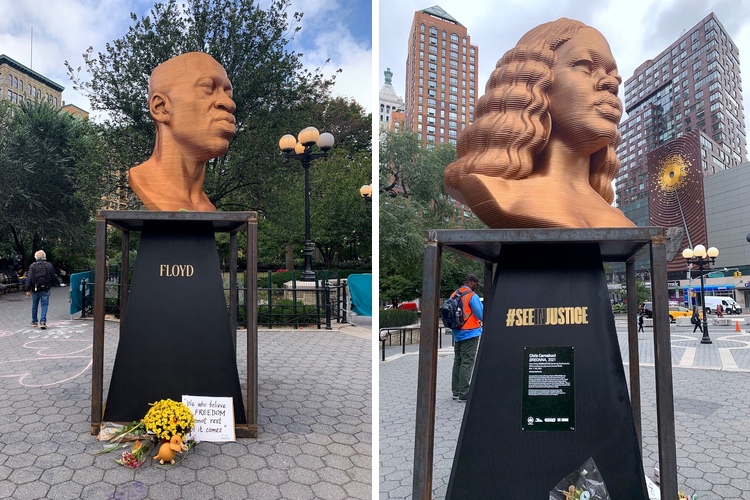
Photo: Pinar Noorata/My Modern Met
SEEINJUSTICE by Chris Carnabuci in collaboration with Confront Art
Sculptor Chris Carnabuci transformed his artistic response to the social climate of 2020 into something big by working with Confront Art on large-scale busts of George Floyd, Breonna Taylor, and John Lewis. Made from 200 layers of thinly sliced African Mahogany wood and coated in shimmering bronze, they were installed in New York City's Union Square.
By working with Floyd's brother Terrance, the collective group wishes to marry “monuments with a movement.” The plan is to continue the exhibition of these sculptures across the country and then auction them off, with proceeds to go to a charity that represents each individual.
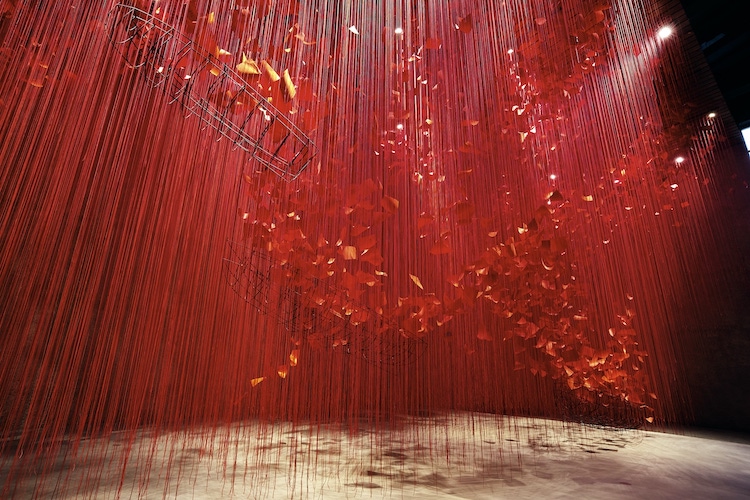
I Hope by Chiharu Shiota
After a long period of isolation, Japanese artist Chiharu Shiota wished to instill hope in others. To do so, she collected 10,000 letters from people around the globe and strung them together with scarlet thread. Installed in a former church-turned-exhibition-space in Berlin, the suspended threads created a delicate web for these letters exploring peoples’ hopes for the future.
While the installation couldn’t be open to the public for the entire duration, Shiota invited musicians and dancers to create interactive performances with the piece, which were then live-streamed. This restriction only served to show the resilience of artists, who are forging ahead of their work in a new age when crowds are often off limits.
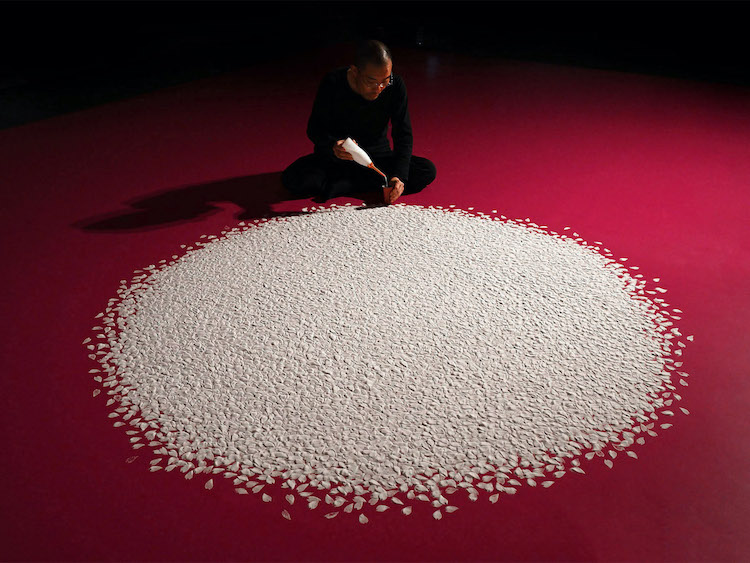
Photo: © Motoi Yamamoto 2021
Salt Cherry Blossoms by Motoi Yamamoto
For his solo exhibition at the Setouchi City Museum of Art, Japanese artist Motoi Yamamoto created an intimate reflection on memory, reminiscing, and moving toward the future. Over 100,000 fallen cherry blossom petals were lovingly created from salt—a medium Yamamoto often works with.
This choice is both aesthetic—Yamamoto appreciates its whiteness—and symbolic. In Japan, salt has been associated with cleansing since ancient times. The fragility of the work is connected to its meaning—life is ephemeral and can change at a moment's notice. A quiet, reflective installation, Yamamoto has created a space to contemplate life and its meaning.
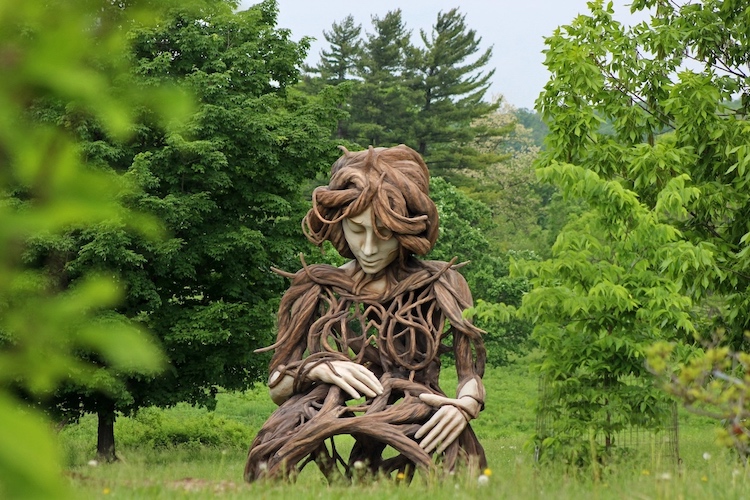
Human+Nature by Daniel Popper
When artist Daniel Popper installed his five monumental sculptures at The Morton Arboretum for his Human+Nature exhibition, he completely transformed the 1,7000-acre environment. His nature-inspired work helped root visitors in the arboretum’s mission to connect with trees.
By using natural motifs, his oversized figures weave a tale of just how interconnected nature and humans are. Particularly striking is UMI, a sculpture of a maternal figure gently cradling her bump. As she looks down, her body formed from seemingly intertwined branches, she appears to be contemplating her impending motherhood.
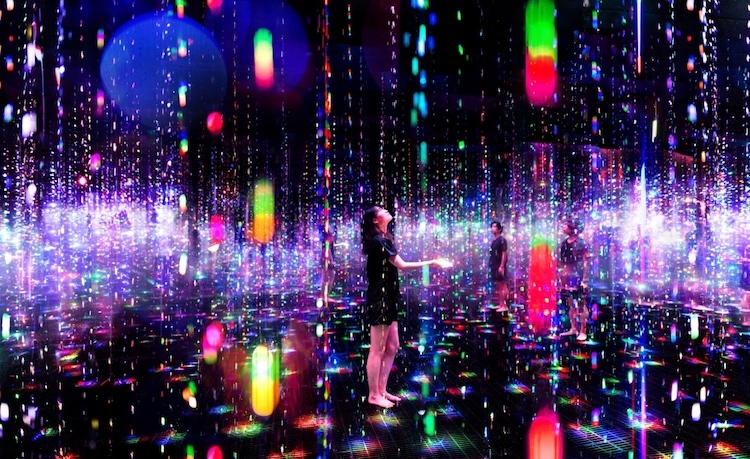
TikTok teamLab Reconnect by teamLab
International art collective teamLab makes frequent appearances on this annual list, and 2021 is no exception. Known for their incredible, immersive experience, this time they’ve pushed things further with an installation created in partnership with TikTok. TikTok teamLab Reconnect took the art-viewing experience to a new level by incorporating a sauna ritual.
On display in Tokyo, the installation takes advantage of the deep sauna culture in Japan. Visitors were invited go into a “sauna trance” by moving through a sauna and cold bathing area before resting in one of five immersive environments. They were then encouraged to repeat the cycle in order to experience a new piece of art.
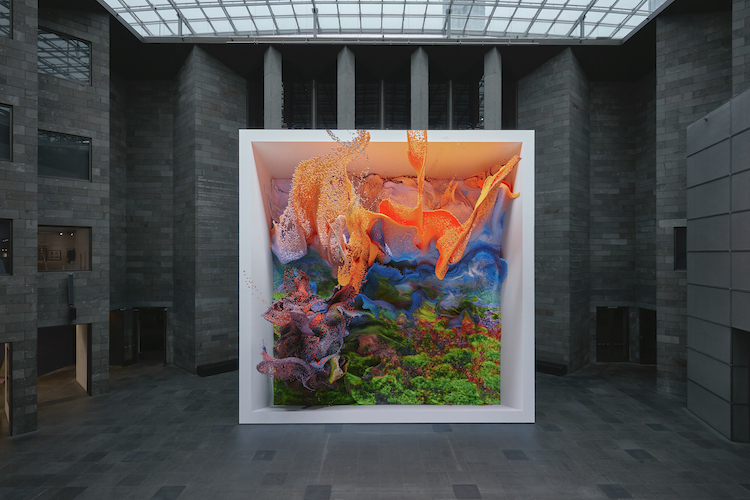
Quantum Memories by Refik Anadol
Digital artist Refik Anadol uses cutting-edge technology to create incredible installations. In early 2021, he created a piece for the NGV Triennial using AI. In fact, over 200 million images of nature were used to put together Quantum Memories.
The results were mesmerizing videos set into an enormous frame. The three-dimensional qualities of the imagery only added to the dynamic installation. As he told My Modern Met, by working in this way “AI is letting me paint with a thinking brush.”
Bonus: Learn more about Refik Anadol's work in his interview with the My Modern Met Top Artist Podcast.
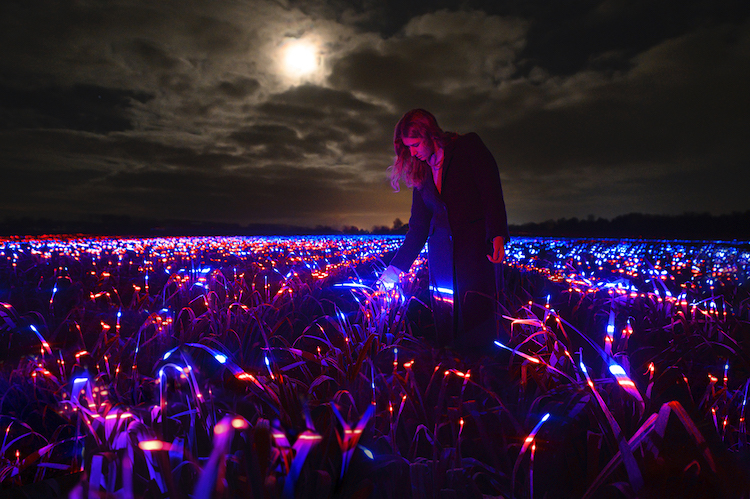
Grow by Daan Roosegaarde
Dutch designer Daan Roosegaarde is know for his installations that help us imagine a better world. His Grow installation is no exception. In this piece, he transformed a 20,000-square-meter (approximately 215,278-square feet) leek field into a piece of art thanks to red and blue LED lights.
These lights not only give the field a futuristic look, but they also encourage plant growth. Roosegaarde incorporated “light recipes,” using different light frequencies that activate the plants’ metabolism and increases their resistance to pests. The work is part of a bigger plan to raise awareness about using connectivity with nature.
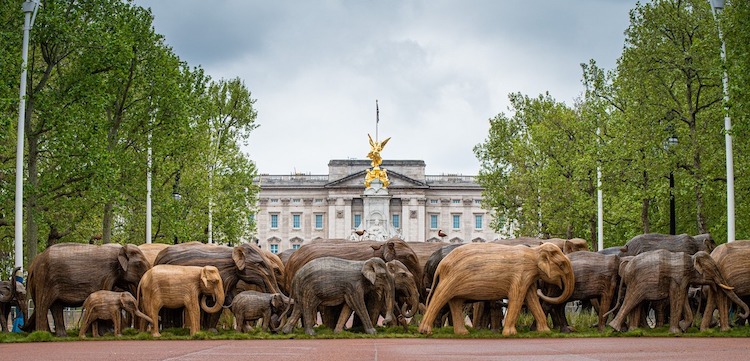
CoExistence by Elephant Family and The Real Elephant Collective
When non-profits Elephant Family and The Real Elephant Collective got together to raise awareness about the plight of elephants, they went big. This meant commissioning 100 life-size sculptures of lantana elephants that would travel the UK to raise awareness of how humans are negatively affecting these gentle giants.
The sculptures were created in India. In fact, they were hand-crafted by Indigenous communities and then made their long journey to the UK. Once there, they were put on display in several places before splashing down in London for a prominent exhibition in the Royal Parks and Berkley Square. All funds raised were then given back to grassroots projects in India that are working to allow people and wildlife to coexist more peacefully.
Next: Learn more about the history of installation art before diving into past years' lists.

Heartbeat by Charles Pétillon
Like most movements that make up modern and contemporary art, installation art exhibits an interest in innovating. Though similar to sculpture and related to a range of recent artistic genres, the immersive practice offers a unique way to experience art. In order to grasp the significance of such a movement, it is important to understand what makes it so special, from its distinctive qualities to its artistic influences.
Here, we explore the avant-garde movement, paying particular attention to the ways in which it creatively engages audiences and manufactures new experiences.
What is Installation Art?
Installation art is a modern movement characterized by immersive, larger-than-life works of art. Usually, installation artists create these pieces for specific locations, enabling them to expertly transform any space into a customized, interactive environment.
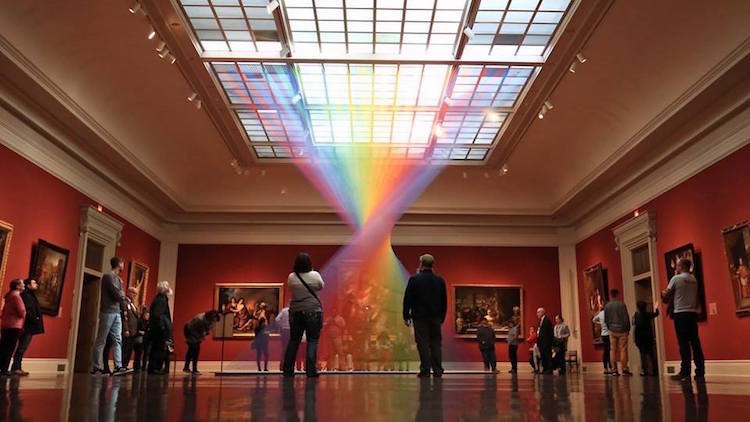
Plexus 35 by Gabriel Dawe
Characteristics
Immersive
A key attribute of installation art is its ability to physically interact with viewers. While all artistic mediums have the ability to engage individuals, most do not completely immerse them in interactive experiences.
In addition to facilitating dialogues between observers and works of art, this unique characteristic invites individuals to view art from new and different perspectives—literally!
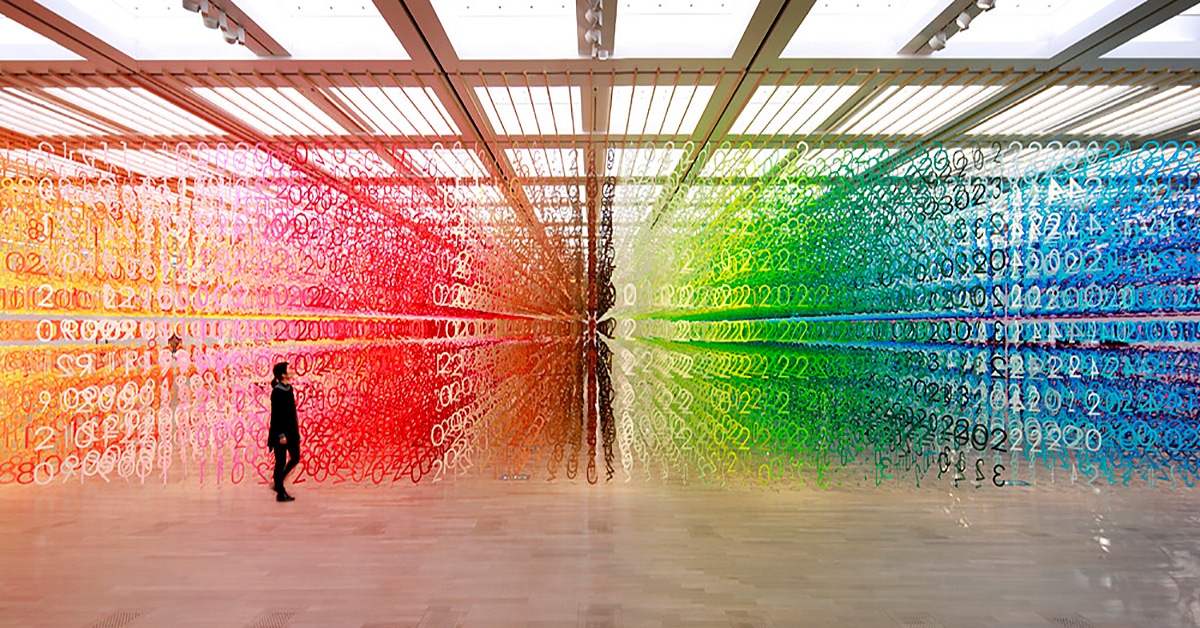
Forest of Numbers by Emmanuelle Moureaux
Large-Scale
Given their interactive nature, most works of installation art are large in scale. Their sizable statures enable viewers to become completely immersed in each larger-than-life environment. In many cases, it even allows them to sit, stand, or walk through it—a distinctive capability not commonly found in more traditional forms of art.
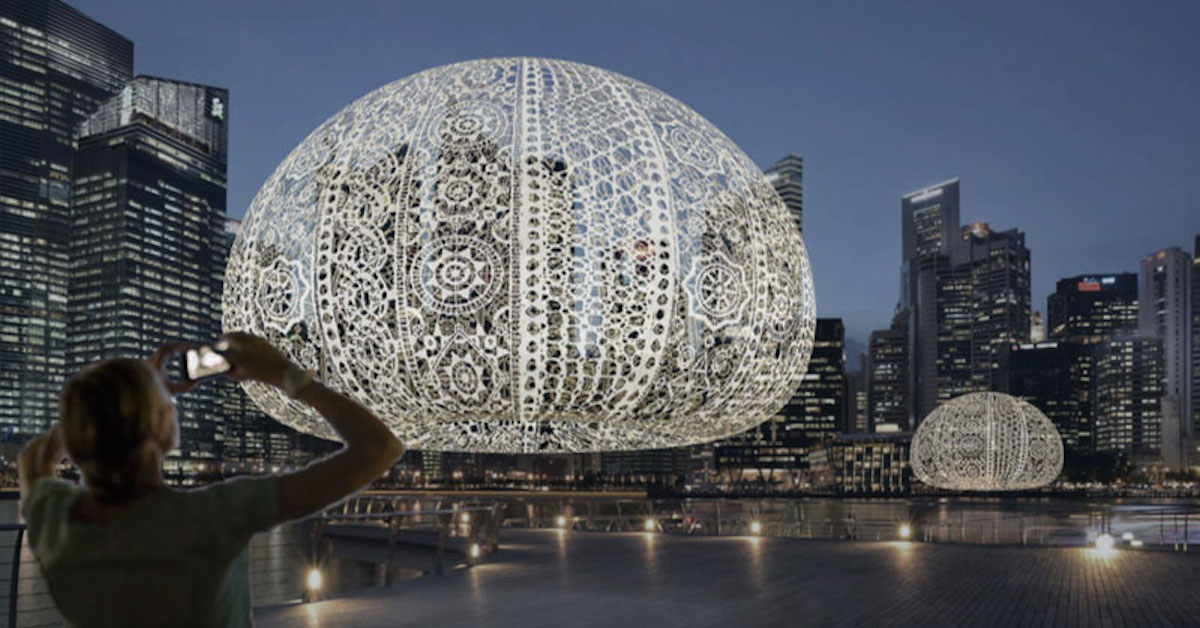
The Urchins by Choi+Shine Architects
Site-Specific
Unlike sculptures, paintings, and similar pieces, installations are usually planned with certain sites in mind, from rooms in galleries and museums to outdoor spaces. Given the strategic nature of their designs and the uniqueness of their surroundings, site-specific works of art ensure a one-of-a-kind aesthetic and experience.
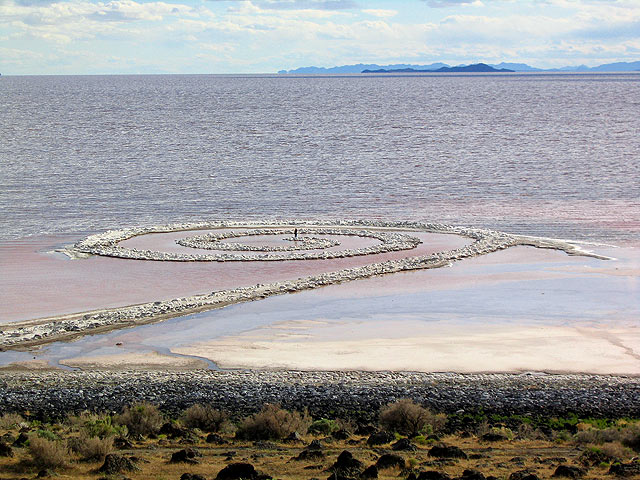
Spiral Jetty by Robert Smithson 1938-1973 (Transferred from en.wikipedia to Commons.) [Public domain or CC BY-SA 2.5], via Wikimedia Commons
Influences
Like many modern and contemporary genres, the installation art form is rooted in several different movements—namely, Dada, conceptualism, and performance art.
Dada
Like Dada, an avant-garde movement that emerged in the early 20th century, installations often showcase an experimental approach to art. Specifically, installation's incorporation of mixed media and emphasis on three-dimensionality are undoubtedly inspired by two Dada staples: ready-mades and assemblages.
Conceptualism
Inspired by the Dadaists, Conceptual artists believe that the idea behind a work of art takes precedence over its aesthetic. This sentiment is also present in installation art, with well-known contemporary artists like Ai Wei Wei and Damien Hirst using their celebrated installations as a means to relay messages to viewers. “As a person, I was born to give out my opinions,” Ai Wei Wei explains. “By giving out my opinions, I realize who I am.”
Performance Art
While performance art—a practice performed before an audience—may seem dissimilar to installation, a form of fine art, the two movements are linked by a key characteristic: a creative and conceptual use of space. In both cases, artists find innovative and inventive ways to reinterpret and reimagine everyday environments.
Next: Now that we know what installation art is, let's take a look at the best art installations from every year since 2013 and get to know the top installation artists in the field.
READ: Best of 2021: Top 10 Incredible Art Installations Celebrate a Return to Public Life
0 Commentaires